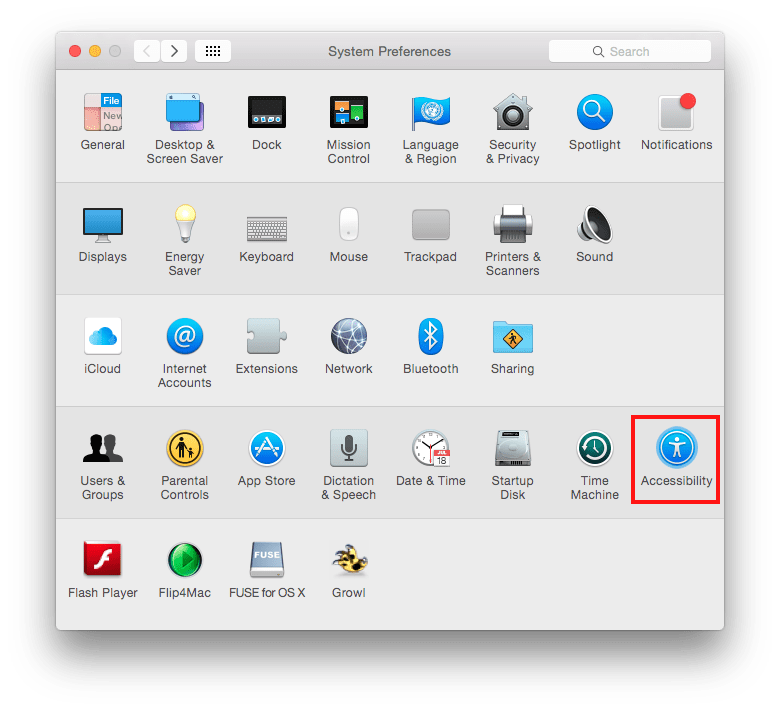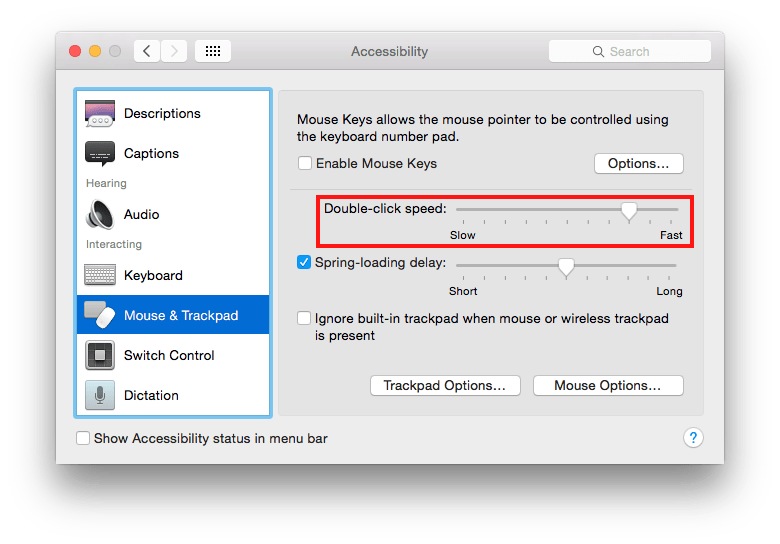Call our helpline
0300 180 0028Note: Mac key convention: ‘Ctrl’ is used for ‘Control’, ‘Apple’ is used for ‘Command’ (⌘) and ‘Alt’ is used for the ‘Option’ (⌥) key.
Note: For keyboard access make sure ‘Full keyboard access’ is turned on – you can turn it on or off; by pressing ‘Ctrl’ + ‘F1’ at any time.
Step 1
- Open the ‘Apple Menu’ by clicking on the Apple icon () in the Menu Bar, or by pressing ‘Ctrl’ + ‘F2’
- Click to select ‘System Preferences…’ as shown in Fig 1 or press the down arrow key to highlight it and then press ‘Enter’.
Step 2
- Click on the ‘ Accessibility ‘ icon or press ‘ Tab ‘ repeatedly (you might need to press ‘ Ctrl ‘ + ‘ F7 ‘ first) to cycle through the icons until the ‘ Accessibility ‘ icon is highlighted and then press the ‘ Spacebar ‘. Fig 2
- Click on the ‘ Mouse ‘ or ‘Mouse and Trackpad’ option if using a laptop tab or press ‘ Ctrl ‘ + ‘ F7 ‘ (once or twice) to highlight one of the options for example ‘ Display ‘ and then press the up or down arrow key to select the ‘ Mouse ‘ or ‘Mouse & Trackpad’ option (highlighted in blue). Fig 3
- Click to select or Tab to highlight the pointer under ‘Double-Click’. Fig 3
- Use the left and right arrow keys to alter the ‘Double-Click speed’ or click to select the pointer and drag to select the appropriate speed.
Step 3
- When you are happy with your tracking speed click the ‘ Close ‘ (red) button at the top of the ‘ System Preferences ‘ window or press ‘ Apple ‘ + ‘ W ‘ to close the window and return to the Finder desktop.
Note: If this does not work it could be because your computer settings cannot be changed due to local IT policies – contact your local IT support for further help.
Need some more help?
Call our helpline 0300 180 0028 or email enquiries@abilitynet.org.uk
Need free IT Support at Home?
If you are older or disabled and need IT support at home, you can book a free home visit.


